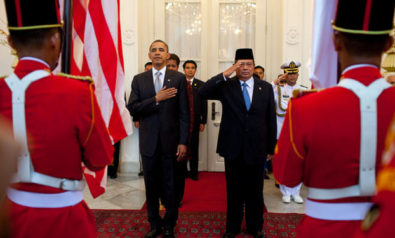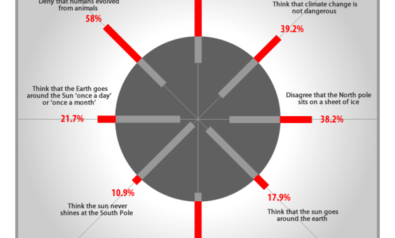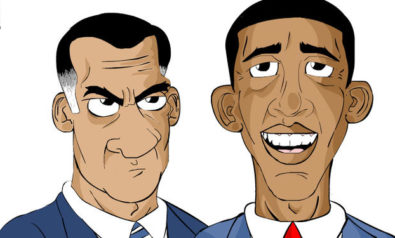For all the talk of red states and blue states, much of America is really purple.
That simple observation has inspired some great alternatives to the standard red and blue maps depicting electoral outcomes. Princeton’s Robert Vanderbei, for example, has created an animation that makes three improvements on the standard red/blue map: he maps counties not just states; he uses shades of purple to reflect the mix of Democratic and Republican votes; and he uses green for third parties. Here’s his animation for the 1960 to 2008 elections; keep an eye out for Ross Perot. (Vanderbei also has a static version of the 2012 results.)
Michigan’s Mark Newman also adopts the purple view, with another wrinkle. Traditional maps emphasize geographic area, not the location of electoral votes (or population). Using some fancy math, he resizes and reshapes states to reflect their relative electoral import. The result resembles a smooshed butterfly, with blue areas (mostly cities) amid a red web:
*Republished from author’s blog.
The views expressed in this article are the author's own and do not necessarily reflect Fair Observer’s editorial policy.
Support Fair Observer
We rely on your support for our independence, diversity and quality.
For more than 10 years, Fair Observer has been free, fair and independent. No billionaire owns us, no advertisers control us. We are a reader-supported nonprofit. Unlike many other publications, we keep our content free for readers regardless of where they live or whether they can afford to pay. We have no paywalls and no ads.
In the post-truth era of fake news, echo chambers and filter bubbles, we publish a plurality of perspectives from around the world. Anyone can publish with us, but everyone goes through a rigorous editorial process. So, you get fact-checked, well-reasoned content instead of noise.
We publish 2,500+ voices from 90+ countries. We also conduct education and training programs
on subjects ranging from digital media and journalism to writing and critical thinking. This
doesn’t come cheap. Servers, editors, trainers and web developers cost
money.
Please consider supporting us on a regular basis as a recurring donor or a
sustaining member.
Will you support FO’s journalism?
We rely on your support for our independence, diversity and quality.












Comment